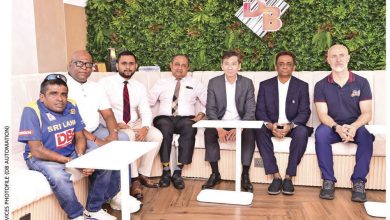WORLD VISION LANKA
Q: World Vision has had a presence in Sri Lanka since 1977… what has sustained this longstanding commitment to the country’s most vulnerable communities?
A: I would say it is our approach to development. Our development work is participatory and community driven. We involve the community – children, families, the marginalised, community and faith leaders, government authorities and other stakeholders – from the inception.
We also consistently adapt our programmes to respond to the country’s evolving needs, shifting between emergency relief and development as needed. Regular monitoring, community feedback mechanisms and impact assessments have reinforced our credibility. This grassroots level trust and collaboration has helped us remain a welcomed and effective presence across the country.
We multiply our impact by partnering with organisations, corporations, foundations, associations, societies and individuals that share our passion to improve children’s wellbeing. Today, World Vision has the largest footprint among international NGOs (INGOs) in Sri Lanka, currently operating in 32 diverse locations across 15 districts.
Q: The organisation’s development model is notably long-term and child focussed… why is this approach important and how does it differ from conventional aid interventions?
A: Children are the best indicators of a community’s social health. When children are fed, sheltered, schooled, protected, valued and loved, a community thrives. Our vision is to see every child enjoy life in all its fullness.
Solving extreme poverty takes time and cannot be achieved by offering only short-term temporary relief. Therefore, World Vision implements 10 to 15 year sustainable development programmes.
Unlike the conventional aid interventions that focus on single issues and are limited to the availability of funding, our development model takes a holistic approach in solving community issues, addressing the root causes.
In this approach, the community is more than merely a beneficiary – it is an active participant. This model allows us to empower and train communities and children to become catalysts of change.
Q: What are the main objectives of the ENOUGH campaign, and how does it address the root causes of child hunger and malnutrition?
A: The ENOUGH campaign is World Vision’s global movement to end child hunger and malnutrition. As the world faces a broken food system and growing crises, ENOUGH tackles the root causes – poverty, climate change and inequality – while amplifying community voices to influence policy and drive sustainable change.
We support local solutions such as homegrown school meals, resilient agriculture and climate smart farming while empowering parents with sustainable livelihoods. Through partnerships with the government, the private sector and civil society, we work to ensure children have year-round access to nutrition. When a children receive healthy meals, they gain the strength to grow, learn, play and reach their full potential.
Q: World Vision is among the first INGOs in Sri Lanka moving toward net zero… what does that journey look like and what are some key milestones achieved so far?
A: Climate change is one of the greatest drivers of poverty and hunger today. Around the world, communities are experiencing unpredictable seasons, prolonged droughts and rising floods with the most vulnerable children bearing the greatest burden despite contributing the least to the crisis.
In collaboration with HELP Logistics, we began calculating the carbon footprint of our Colombo office in 2024; and this year, we plan to extend these calculations to our field offices. World Vision Lanka (WVL) has also drafted a road map to achieve net zero emissions by 2030 for Scope 1 and 2, incorporating offsetting targets through our climate smart agriculture interventions.
We initiated an energy audit of our Colombo office to reduce energy leakages and more than half of our energy needs are being met through solar power. In addition, an environment and climate change working group – The Green Team – was established to lead and support efforts to mainstream environmental and climate change policy and practices across the organisation including our field level programming.
Q: You made a shift from the corporate banking sector to humanitarian work… what inspired that transition?
A: I spent 31 years working in the ‘for profit’ corporate sector. While I did experience a certain level of job satisfaction by contributing to the company’s triple bottom line, I was engaged with World Vision Lanka on a voluntary basis as a goodwill ambassador and board member of the microfinance arm, VisionFund Lanka, since 2010.
In these roles, I witnessed firsthand the tremendous impact World Vision was making on the most vulnerable children in our country. So when the opportunity arose, I seized it. When I was leaving the bank, the then CEO asked me why I really wanted to leave.
My answer was: “Every day I work at the bank, I’m making rich people richer. But I want to make a difference in the lives of the most vulnerable members of our society and help bring fullness of life to them.” He immediately said: “Go!”
– Compiled by Tamara Rebeira
COMPANY DETAILS
Telephone: 2691233 | Email: srilanka@wvi.org | Website: www.wvi.org/srilanka








